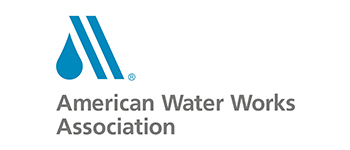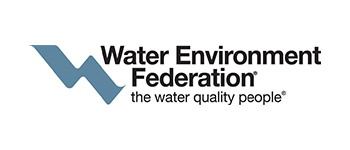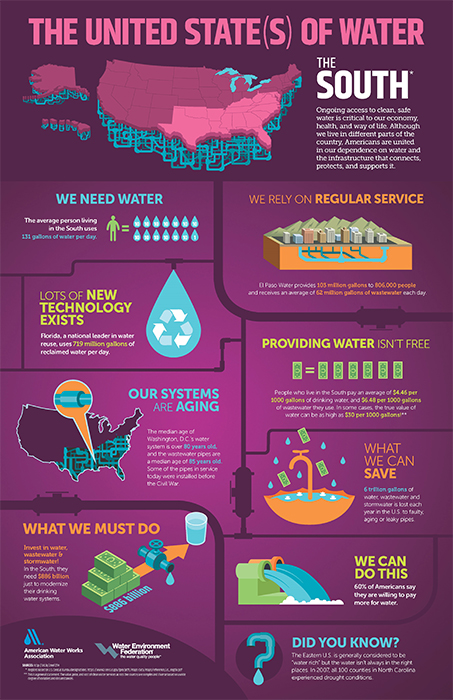

Pluris is a member of both the AWWA and the WEF technical organizations and is sharing a recent collaboration on the value of water and wastewater. Pluris is providing a summary of the organizations’ findings in this article.
The Value of Water
The American Water Works Association (AWWA) and the Water Environment Federation (WEF) along with members and partners are reaching out to the public in a national value of water campaign to share the value of clean, safe water and the importance of investing in the infrastructure that has been neglected in the US for decades. Information includes a collection of facts and statistics about the US water and wastewater and is briefly summarized in the following;
- A community without water? Without access to a sustainable water supply, communities are at risk. Service disruptions for failing or inadequate water and wastewater infrastructure directly impacts medical facilities, schools, daycares, and firehouses, just to mention a few. Nearly every aspect of our lives is connected to water. Without clean water and clean water services, our lives would stop.
- The true cost of water. Water is free, but the collection, transport and treatment of drinking water and wastewater is not. Customer water/wastewater bills ensure that communities have reliable access to clean, safe water.
- Much of the water and wastewater infrastructure in the United States – more than 800,000 miles of drinking water pipe and 700,000 miles of wastewater pipes – is at a crisis point. By strategically investing in these systems, we are helping to maintain quality of life while protecting communities from public health and environmental concerns.
- Keep it flowing! Community water/wastewater bills support the ongoing and essential cycle between safe drinking water and wastewater treatment. Neighbors working in the water sector ensure those services work effectively and in unison to protect the community, and environment.
- A lasting legacy. Friends and neighbors who work in the water sector have a passion for their communities and have devoted their entire careers to water safety. They work 24/7, 365 days a year to ensure that families have reliable access to safe, clean water and an effective wastewater system that is protective of public health and our environment. The water sector professionals in communities are dedicated to securing your quality of life today and to providing a bright future for generations to come.
- We’re in this together. Protecting access to clean, safe water and an efficient wastewater system through water/wastewater bills means that customers are also conservationists. Personal water stewardship and active support of clean water utilities ensures that waste can be effectively addressed in our lifetime, without a negative impact on generations to come.
- Thinking ahead. Early investments in U.S. water and wastewater infrastructure has had a 23 to 1 return for public health. In some communities, pipes that were installed a century ago are still in use! We can build on the ingenuity of the past and protect our future by investing in water infrastructure today.1
- Water is finite. As we focus on providing the best quality water possible to communities, we must see its use as a true cycle, from drinking water to wastewater and back again. Innovation focuses on efficiently and effectively treating water in new and different ways to ensure the water we have access to is completely optimized for years to come.
- Resiliency is key! Pressures from population growth, climate change, and urbanization are straining our clean water systems up to or beyond capacity. It’s essential that we invest in our water and wastewater infrastructure for sustainable growth, enhanced livability, and a resilient future.
- Water is a smart investment. In addition to public health and environmental protections, we could gain over $220 billion in annual economic activity and generate 1.3 million jobs by meeting U.S. water and wastewater infrastructure needs.2
- Going green, saves green. Storm water is the only growing source of water pollution in many watersheds across the country. We can save 30% to 60% by treating storm water at its source with green and traditional infrastructure.3
Presented in the following two illustrations is a summary of interesting statistics regarding water and wastewater infrastructure information on a National level as well as for the southern states in the US.


1 Cutler D, Miller G. 2004. The role of public health improvements in health advances: the 20th century United States. [PDF - 50 pages] National Bureau of Economic Research. Working Paper 10511. Cambridge, MA, USA.
2 The Value of Water Campaign, Economic Impact Analysis (March 2017), http://thevalueofwater.org/sites/default/files/Economic%20Impact%20of%20Investing%20in%20Water%20Infrastructure_VOW_FINAL_pages.pdf
3 http://stormwater.wef.org/2015/12/real-cost-green-infrastructure/

